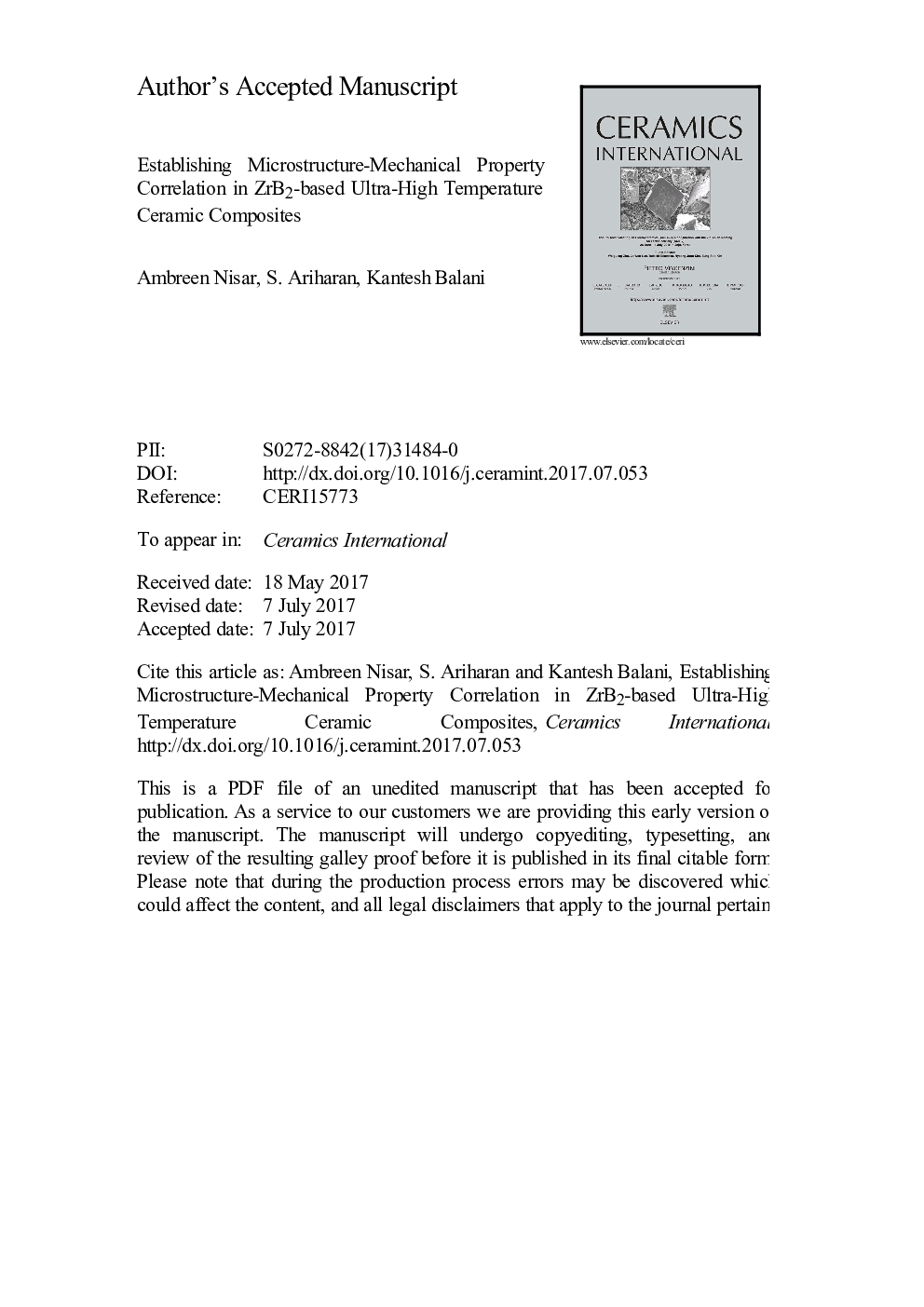| Article ID | Journal | Published Year | Pages | File Type |
|---|---|---|---|---|
| 5437849 | Ceramics International | 2017 | 32 Pages |
Abstract
The current work focuses on enhancing the flexural strength and fracture toughness of zirconium diboride (ZrB2) reinforced with silicon carbide (SiC) and carbon nanotubes (CNT). The flexural strength has shown to increase by ~ 1.2 times from 322.8Â MPa (for ZrB2) to 390.7Â MPa and fracture toughness up to 3 times from 3.2Â MPam0.5 (for ZrB2) to 9.5Â MPam0.5 with the synergistic addition of both SiC and CNT in ZrB2 matrix through energy dissipating mechanisms such as deflection, branching and strong interfacial bonding evidenced from the transmission electron microscopy (TEM). A modified fractal model is used to evaluate the fracture toughness and delineate the contribution of residual stresses, and reinforcements (SiC and CNT) in enhancing the fracture toughness. Interfacial bonding, in terms of a debonding factor, was also evaluated by theoretically predicting the elastic modulus and then correlated with the microstructure along with other mechanical properties of ZrB2-SiC-CNT composites.
Related Topics
Physical Sciences and Engineering
Materials Science
Ceramics and Composites
Authors
Ambreen Nisar, S. Ariharan, Kantesh Balani,
